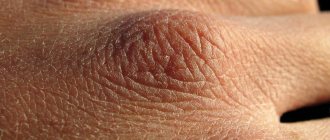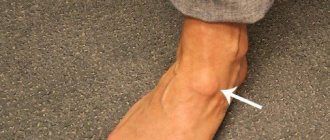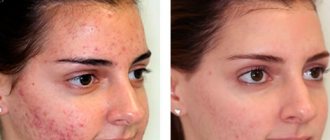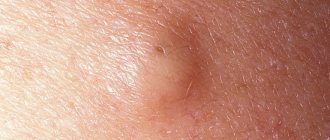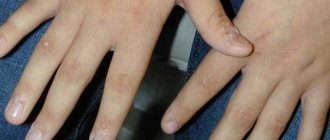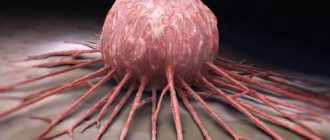.
Regardless of which method of surgery to remove a mole is chosen, the formation of a scar or scar is almost inevitable. That is why everyone who has undergone surgery aimed at removing moles is interested in the question of what to do with postoperative marks.
Those who are planning to remove a mole are concerned about the marks after the procedure
How does healing proceed after removal?
Modern techniques for excision of nevi are low-traumatic . But after the operation there is still an open wound that takes time to heal.
The recovery period usually takes from several weeks to one and a half years . It depends on the size of the removed mole, the depth of its occurrence in the skin, the qualifications of the doctor and the method by which the cells of the formation were excised.
After a properly performed operation, on the second to fifth day, a dark crust forms at the site of the surgical intervention, slightly larger than the former mole. A similar crust appears with ordinary deep skin trauma. After a while, the crust dries and peels off, after which it disappears on its own. In its place there remains a small pink depression. After about a month, a new layer of epidermis covers the hole . In this area the skin still has a slightly lighter shade. And only after six months or a year the spot becomes pigmented and the skin acquires its natural color.
After cryodestruction, with slight suppuration appears at the operation site which after a week turns into a blister . This is a normal healing process. After some time, the bubble acquires a dense structure with the formation of a scab. The scab heals more slowly, but over time it also falls off without outside help.
Preventive measures
The formation of a scar after removal of a pigmented growth can be prevented. To do this, after the operation it is necessary to implement a number of preventive measures. However, the question of whether a scar will remain on the skin or not does not always depend on the patient’s actions. Quite often, the appearance of pathology depends on the qualifications of the doctor and the individual characteristics of the epidermis.
The appearance of a postoperative scar also depends on the location of the mole. For example, when removing nevi located on the folds, chest or earlobe, pathology appears much more often. Therefore, the question of whether scars remain in a particular place can be decided with the surgeon in advance.
To avoid additional injury to the epidermis, it is very important to avoid excessive skin tension during surgery. The crust that forms at the cut site must be very carefully protected. It cannot be torn off, smeared with creams or wetted with water. Natural restoration of the layer will ensure that a scar does not appear at the site of the cut pigment growth. It is also very important not to introduce an infection into the wound. In addition, the injured area requires certain care:
- the wound should be washed regularly with hydrogen peroxide;
- to prevent the inflammatory process, it is necessary to promptly change the protective bandage;
- if a doctor prescribes medication, then you need to follow the ointment application regimen as carefully as possible;
- acupressure around the cut site will help improve blood supply to the fresh layer;
- during the rehabilitation period, it is recommended to drink more fluids and eat foods rich in vitamin A, omega acids and zinc;
- the injured area must be reliably protected from sunlight.
When carrying out preventive therapy, the use of untested drugs should be avoided. Many hormonal and anti-inflammatory drugs can have the opposite effect. If left on the skin for a long time, such medications can cause irritation and cause the formation of lumps. Also, when treating a wound, you cannot use traditional methods.
Mole removal is a surgical procedure that involves excision of a spot. It can be carried out with a scalpel or minimally invasive methods: laser coagulation, diathermoelectrocoagulation, cryodestruction, radio wave method. It is necessary to follow the rules of preparation and postoperative care, otherwise keloid scars appear, the mole itches after removal, the state of health is disturbed, pain occurs, recurrence of the nevus, and suppuration of the wound area.
Possible complications
After excision of a nevus in its place, complications are possible . This depends on many factors, including the type, size, location of the mole, removal technique and the professionalism of the doctor. We should not forget about the individual characteristics of the patient’s skin, the state of his immune system and the quality of skin care after completion of the removal procedure.
Proper care is the key to successful healing of the wound left after surgery.
Hypertrophic scar (induration, tubercle)
Tissue regeneration after surgery occurs gradually. At the site of the removed mole, after the black crust falls off, a small depression remains, which is gradually overgrown with a new layer of epidermis.
In some cases, the layer of skin acquires a convex shape , slightly darker in color than the natural color of the epidermis. Such a tubercle is called a hypertrophic scar.
Note! If there are no other serious symptoms, the scar does not itch, is not inflamed and has smooth edges, then there is no need to treat it. Over time, the tubercle will become softer, the skin will acquire normal pigmentation and a smooth surface.
Does not require treatment.
White spot
The appearance of a white spot at the site of a removed nevus is possible only in three cases:
- If the black crust - a protracted postoperative wound - was torn off ahead of time and pigmentation in the deep layers of the skin became impossible;
- The body of the mole went deep into the layers of the skin and during the operation the pigment cells were removed along with the nevus;
- After the operation, the patient did not protect the site from exposure to ultraviolet sunlight .
Why do scars itch and what to do about it?
It is extremely important that the healing of the skin and soft tissues after an injury or surgery proceeds without complications. Both the aesthetic result and human health depend on this, so special attention should be paid to any unusual symptoms during this period.
What to do if the scar itches? Itching can occur both in the initial period of its maturation and at a later stage, be of varying intensity, accompanied by pain and redness, or appear without any other symptoms. Is there cause for concern in each of these cases? Should you immediately run to the doctor? How to cope with discomfort and what to do if the situation gets worse? TecRussia.ru goes into detail:
For quite a long time, doctors believed that itching was a type of pain, only much weaker.
But relatively recently it became known that special receptors, C-fibers, which account for about 5% of all nerve endings in the skin, are responsible for the feeling of “itching” in humans.
They can be stimulated by various influences, external and internal, including substances that are formed during an acute or chronic inflammatory process: histamine, interleukins, proteinases, etc.
Considering that inflammation is an integral part of tissue healing in the early stages, it can be considered normal for a fresh scar that is just beginning to form to itch . The main thing here is not to rub the problem area with your hands and, especially, your nails.
You can use a cold compress or a skin soothing product instead, and antihistamines also work well for many people, but should only be taken with your doctor's approval.
In addition, the condition of such a scar must be carefully monitored - pain, redness, swelling, the appearance of ichor or pus should be a cause for concern: all these are signs of infection that require urgent medical attention.
For treatment, antibiotics and anti-inflammatory drugs are usually prescribed orally or locally. You may even have to open the wound, clean it, and then stitch it again.
Also, scars often itch when they are irritated by tight-fitting clothing, rough fabric, piercings or other jewelry. Everything here is extremely simple: you need to take off your jewelry, change your clothes to softer and looser ones.
It is extremely important to eliminate friction as much as possible in the first months of scar maturation, since, in addition to unpleasant sensations, it can cause its hypertrophy and even the formation of a keloid (thus, lovers of scarring specifically rub the healing areas with a thick towel to make the scars brighter and more voluminous).
Another way to protect overgrown skin from constant trauma is silicone occlusive bandages.
- An old seam can itch when the adjacent skin is excessively dry - for example, as a result of using an aggressive shower gel, or simply when it does not receive enough care. If this is the reason, you will need products that restore normal pH levels. In particular, creams recommended for atopic dermatitis are good, for example, the well-known Lipicar series produced by La Roche-Posay, the TriXera series from Avene, the Emolium series, Mustela and others.
- Sometimes discomfort in scar tissue occurs on the eve of rain, snowfall, or a dramatic change in weather. This is due to a jump in atmospheric pressure: as a result, the internal pressure in the body also changes, which, in turn, affects the intensity of blood flow through the vessels adjacent to the suture. Unpleasant sensations pass quite quickly, and they can also be relieved with local sedatives.
- An uncommon but very dangerous cause of itching is the formation of a ligature fistula. This is typical for postoperative wounds: they are usually sutured in layers, and if the sutures are quickly removed from the skin, then in the deeper tissues - the peritoneum and joint capsules - they remain for a long time. Over time, the body may react to them as a foreign agent (even if hypoallergenic suture material is used) and begin rejection, and this can happen already in the first days after surgery, or maybe only months or even years later. The main symptoms are the appearance of a limited area of redness around the scar, in place of which an abscess then appears. You can wait for several years for the pain to go away on its own; besides, an infection can get inside and aggravate the condition (even sepsis). Your doctor may advise you to wait until the fistula has formed before opening it and removing the offending suture material. If this tactic does not help, complete excision of the problem area of tissue will be required.
- Many people complain that the skin begins to itch after using special external gels and ointments for scars. Manufacturers of some of these drugs, for example, Contratubeks, specifically stipulate this point in the instructions: itching is not a mandatory, but quite expected reaction, and if it is tolerable, nothing needs to be done. But sometimes the reason is an allergy or individual intolerance to the components of the product; discomfort is usually accompanied by a rash and redness. If such symptoms appear, you should stop using the drug and consult a dermatologist to select another remedy.
- After mole removal, small scars remain on the skin, which normally do not cause any discomfort and heal within a few weeks. But sometimes they also start to itch. The edges of the wound usually become red and swollen. Here it is necessary to seek an in-person consultation with a dermatologist to determine whether this is inflammation caused by an infection, or whether the tumor was not completely removed and began to grow again. In the latter case, repeated removal will be required; for safety, this is often performed surgically.
It is an extremely unpleasant situation when, several months after the injury, the healing areas of the wound increase in volume, become convex, rough to the touch, and acquire a bright red or burgundy color. Most likely, this is the formation of a keloid scar, and usually it not only itches, but also hurts - unfortunately, this is a normal condition for it.
- Why and how long do stitches hurt after surgery?
Such scars should be treated in the early stages of maturation.
The main therapeutic methods that have proven effectiveness (and are included in international clinical guidelines) are corticosteroid injections and silicone occlusive dressings.
As additional procedures, it is possible to use drugs based on hyaluronidase or collagenase in the form of local injections or electrophoresis agents.
https://www.youtube.com/watch?v=4q_FgHF7-II
If time is lost, laser resurfacing and other abrasive procedures are used for correction. But surgical removal of such a scar is considered not the best option, since after the operation it can grow even stronger. In any case, the formation of a keloid is a reason for an early visit to a dermatologist, general or plastic surgeon.
| What's happening | What to do |
| A young scar itches in the early stages of maturation | It is necessary to make sure that there is no friction with clothing or jewelry, and also carefully monitor the condition of the seam and the skin around it so as not to miss signs of the inflammatory process. |
| Pain, redness, and swelling appear. A granuloma with purulent or sanguineous contents may form. | Perhaps an infection has entered the wound, or a ligature fistula is forming. An in-person examination by a doctor is required. |
| Discomfort occurs after using anti-scar ointment | Tolerate or change the drug used to another. |
| The mark after mole removal is itchy and/or red and swollen around the edges | You should consult a doctor to rule out re-growth of the tumor, and also make sure there is no inflammation |
| Growing keloid hurts and itches | Begin treatment as early as possible to reduce the volume and improve the appearance of the scar. It will be most effective in the first 12 months after injury. |
Source: https://www.tecrussia.ru/problem/3279-cheshutsya-shramy.html
Treatment of postoperative scars
Postoperative lumps are difficult to treat. Getting rid of a scar or scar will require patience and time . It is better to monitor the condition of the wound in the first months after the operation than to get rid of the consequences afterwards.
To eliminate a cosmetic defect, which is a scar, a specialist may prescribe:
- Drug therapy with the use of immunostimulants and corticosteroids that affect collagen formation;
- Use of pressure bandages with special ointments or silicone patches;
- Carrying out cosmetic surgery in the presence of a tubercle, scar or keloid scar (laser resurfacing, re-operation).
Causes and dangerous consequences of mole removal
The consequences of mole removal are the result of individual characteristics of skin regeneration, the immune system, the method of exposure - freezing of the deep layers of the skin, burns in the absence of adjustment of the laser temperature - non-compliance with recommendations for preparation for the procedure, care of the suture, wound surface after surgery.
Symptoms that may bother the patient are a reason to consult a dermatologist for advice. If the site of the formation hurts, itching, peeling of the epidermis appears, the addition of secondary microflora is observed with the release of pus or blood from the wound, rapid fatigue - such a clinical picture should alert a person. Relapse is possible. Incomplete removal of a birthmark can provoke malignant cell growth.
Pain at the surgical site
If the site of mole removal hurts, you should pay attention to the time interval from the moment of excision of the nevus. It is important whether the postoperative scar aches several weeks or months after the intervention, or whether the open wound causes discomfort.
If the scar begins to hurt after removing a mole 14-18 days later, this is a reason to consult a doctor who performed surgery to eliminate the pigment formation.
In case of discomfort when pressing and redness of the surrounding tissues, concomitant pathology may occur.
Very itchy
Removing a mole is often accompanied by itching and swelling. Wounds on the hands and feet may itch due to frequent washing, treatment with disinfectants, and soap. On the back - due to increased sweating - hyperhidrosis - friction of the postoperative wound on clothing.
Scars itch after mole removal for various reasons:
- Normally, itching occurs as a result of healing and scar formation. There is no inflammation or pain;
- the addition of pathogenic microflora with the development of bacterial inflammation. An infectious agent can penetrate the wound surface if the rules of asepsis and antisepsis are not followed;
- Complications after a laser burn may occur due to swelling, edema and itching;
- disruption of the healing process, suppuration of the wound can provoke itching.
Burning
Burning and pain occur with superficial and deep burns of the skin. Normally, when the postoperative area heals, the feeling that the skin begins to “burn” does not appear. It can be observed due to insolation and lack of protection with sunscreens with a high level of SPFSFA.
Weakness, temperature
Increased body temperature and pain after removal are a pathological sign. It may be an individual form of the immune system’s response to eliminating pigment formation:
- an increase in body temperature can serve as a signal of malignant processes in the body associated with getting rid of a mole;
- layering of a secondary bacterial or viral infection, manifestation of the acute phase of the disease due to failure to maintain sterility during the operation, introduction of infectious pathogens;
- provocation of autoimmune pathology due to surgery;
- inflammatory processes in the lymph nodes according to the type of immediate hypersensitivity reaction.
The place where the mole was removed is itchy
After the procedure to remove a nevus, there is a possibility of complications developing. The decisive role is played by the skills of the specialist performing the operation, the chosen method of excision of the formation, the type of mole and the individual characteristics of the patient’s body. Complications can also arise if the wound created during removal does not receive proper care.
In addition to the fact that the patient must know about the possible consequences before the procedure begins, the specialist must collect data describing the general state of his health, and the remote formation at the end of the session must be subjected to histological examination. The formation of scars occurs when the cells involved in the production of collagen begin to multiply rapidly, while the enzyme that destroys collagen is not produced enough. Because of such cells, fibrosis of tissue structures begins and a scar is formed. It is better not to touch subtle scars. However, if they cause certain inconveniences, it is recommended to undergo a treatment course. The doctor may prescribe corticosteroids and immunomodulators, physiotherapeutic procedures, radiation therapy, and laser resurfacing.
Healing
Any method of removing a nevus leaves a mark on the skin - a wound, the diameter of which depends on the original size of the mole. It becomes covered with a crust that forms a small tubercle and performs a protective function (protects the vulnerable area from infection). For this reason, it is forbidden to remove the crust from the wound; you must wait until it falls off on its own: the process takes about 2 weeks.
The young skin formed at the site of nevus removal (it is colored pinkish) should be protected from the harmful effects of ultraviolet rays using a protective cream with an SPF factor of 60 or more.
Otherwise, there is a possibility that the area will turn into a pigmented spot. The color change from pink to normal occurs within one to two months.
However, if a slight discomfort remains, do not panic.
Complete healing sometimes takes about 6 months, during which the area where the nevus was located is palpated and causes discomfort.
An almost imperceptible scar may remain at the site of the removed mole if the excision was carried out using liquid nitrogen, electric current, the radio wave method, sometimes a laser leads to this result. Scarring is a natural process, this is how the body reacts to a violation of the integrity of the integumentary tissue. Since some people have a higher ability to regenerate, removal can take place without leaving a trace.
Scars that look like small tubercles may remain when a nevus is excised surgically, since the operation involves the application of cosmetic sutures: damaged tissue is cut off with a scalpel, healthy tissue is stitched. It is almost impossible to avoid noticeable marks in such a situation.
Consequences
Sometimes removing moles leads to unexpected unpleasant consequences that require taking certain measures. May cause concern:
- A malignant tumor that occurs in the area where the removed nevus is located. Detection of melanoma requires surgery, which removes not only the tumor itself, but also healthy tissue (a small area) around and under it. Afterwards, the excised edges are sutured and the cut material is examined.
- The formation of a scar (keloid scar), which is a red bump that rises above healthy tissue. There are 2 cases in which such a mark may appear on the skin: if the operation was performed by an inexperienced doctor; when the mole being removed has a large diameter.
- The appearance of edema. The reason is the involvement of the lymphatic vessel during the excision of a mole. When lymphatic collaterals (bypasses) form, swelling usually disappears.
- Compaction detection. If enough time has passed after the operation to remove a mole for the excision area to heal, but instead a lump has formed, it is necessary to visit an oncologist to rule out malignant degeneration of the cells.
- Re-formation of nevus. Relapse is the most common result of mole removal, in which it can reach a larger size than it was before the operation.
The nature of the tubercles formed
The tubercles that may appear at the site of excision of nevi, in most cases, represent an infiltrate that develops with severe trauma to tissue structures, poor hemostasis (blood clotting), or infection. They look like cellular structures that are permeated by lymphatic fluid or blood. The formation of this element has an inhibitory effect on healing or completely stops this process.
With an inflammatory infiltrate, redness of the skin is observed, pressure leads to the fact that the affected area begins to hurt.
The formation of a non-inflammatory infiltrate occurs in the postoperative period. It is represented by tissue that is saturated with lymph or drugs, without signs of an inflammatory process.
Typically, such seals disappear without outside intervention after some time: healing takes weeks, sometimes months. Special regenerating medications and physiotherapy help speed up resorption.
If inflammation develops, contacting a doctor is a must.
Should you see a doctor with these symptoms?
If deviations appear after removing a mole, atypical symptoms, pain, even if the symptoms stop spontaneously, it is recommended to consult a doctor to avoid complications.
It is necessary to pay attention to acute symptoms. If certain signs appear, you should immediately contact the dermatology department:
- atypical discharge from the wound - blood, pus, serous clear liquid - one-time or constant;
- raising body temperature to 39-40 degrees. Prolonged hyperemia, which is poorly treated with antipyretics and NSAIDs;
- acute and throbbing pain, difficult to relieve with medications. Taking ibuprofen or aspirin should be avoided: they increase the risk of bleeding from a postoperative wound.
The doctor will determine the nature of the changes, conduct diagnostics, and help differentiate pathological symptoms from normal processes of epithelization of the postoperative wound. If necessary, he will prescribe additional biochemical tests or histological examination of tissue from the surgical area.
Diagnostic methods
If a mole on your stomach or back is very itchy and there are no irritants, you need to go to see a doctor and undergo a prescribed examination. Methods for diagnosing pathologies of nevi include:
- Biopsy. A particle of the pathological marker is collected and thoroughly examined. Allows you to detect the presence of malignant cells. Recently, this method is rarely used, since it has been found that it is a factor provoking the degeneration of a nevus.
- Dermoscopy. A dermatoscope is used - a special device that allows the doctor to examine the mole, enlarged several times, and also take a digital image of the formation for detailed study.
Differential diagnosis
To prevent skin cancer, differential diagnosis is carried out. The doctor examines the formation using a magnifying glass under intense lighting. The presence of lymph node damage is diagnosed by palpation. During the examination, a change in the color of the formation is noted, how convex the mark is, whether its growth is symmetrical, and the presence of sensations unusual for the spot.
How to treat a scar
Treatment before the process of removing moles using one of the surgical methods and care after surgery are mandatory components of preventing the development of negative reactions. If there is pain in the scar area, you can use medications:
- antiseptics to relieve discomfort, eliminate secondary microflora - brilliant green, alcohol, iodine solution, Betadine, Miramistin, Chlorhexidine bigluconate;
- dyes with a drying effect to stimulate epithelization, eliminate a weeping wound, and rapid healing - Fukortsin, Castellani paint;
- ointments that relieve inflammation - Levomekol, Solcoseryl, Streptomycin, Baneocin, Betamentasone, ointments with Panthenol;
- ointments and creams that stimulate suture contraction and skin regeneration after surgery - Kontraktubes, Mederma;
- natural oils, herbal decoctions for rubbing and relieving pain - milk thistle oil, sea buckthorn, St. John's wort, aloe;
- Actovegin - stimulates regeneration at the cellular level.
In what places on the body are nevi injured?
In some areas of the body, moles are most often torn off and damaged, which is explained by their inconvenient location. Such problem areas include:
- face;
- collar area and neck;
- armpits;
- inguinal cavities and lower abdomen;
- scalp under the hairline;
- areas under the mammary glands.
If injury to a nevus in one of these places occurs frequently, the most correct solution would be to remove it. Sometimes patients are also interested in what to do if they have torn off a mole on their back. What to do? Actually, there are no fundamental differences in providing first aid. To properly treat the damaged area, ask someone to help, since it will not be very convenient to treat the wound by touch and apply a bandage.
What sensations are normal after removal?
After the destruction of nevi, birthmarks, and moles, a scar may form. Depending on the method of elimination, the individual characteristics of regeneration, epithelization, and wound healing, the process takes up to 2 weeks. For large volumes, deep location – up to 3 weeks.
Scar formation begins at the stage of drying of the wound surface crust. It is important to preserve it until it peels off on its own: after trying to tear off the crust, the scar may become too rough.
Options for scar formations:
- A hypertrophic scar with a rough, uneven relief, rising above the surface of the skin.
- Keloid. A raised mass that occurs infrequently. Depigmented with a smooth glossy surface.
- Red or purple - the initial form of scarring, forms under the crust after falling off, then moves into the next stage of development.
If you experience symptoms of impaired mole healing and pain after removal, it is recommended to seek medical help.
Oncologist-dermatologist. Specialist in benign and malignant skin lesions.
- Candidate of Medical Sciences,
- Member of the European Society of Surgical Oncology (ESSO),
- author of 12 scientific papers and 1 patent for invention,
- performed more than 1,500 operations to remove moles, warts, and papillomas.
Sign up for a consultation in St. Petersburg by phone: +7 (812) 967-21-14.
